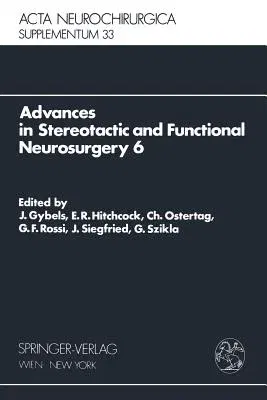Advances in Stereotactic and Functional Neurosurgery 6: Proceedings of the 6th Meeting of the European Society for Stereotactic and Functional NeurosuPaperback - Softcover Reprint of the Original 1st 1984, 30 April 1984

Qty
1
Turbo
Ships in 2 - 3 days
In Stock
Free Delivery
Cash on Delivery
15 Days
Free Returns
Secure Checkout
Part of Series
ACTA Neurochirurgica Supplementum / Advances in Stereotactic
Part of Series
ACTA Neurochirurgica Supplement
Part of Series
ACTA Neurochirurgica Supplement / Advances in Stereotactic a
Part of Series
Advances in Stereotactic and Functional Neurosurgery
Print Length
587 pages
Language
English
Publisher
Springer
Date Published
30 Apr 1984
ISBN-10
3211817735
ISBN-13
9783211817735
Description
Product Details
Book Edition:
Softcover Reprint of the Original 1st 1984
Book Format:
Paperback
Country of Origin:
US
Date Published:
30 April 1984
Dimensions:
22.86 x
15.24 x
3.1 cm
ISBN-10:
3211817735
ISBN-13:
9783211817735
Language:
English
Location:
Vienna
Pages:
587
Publisher:
Series:
Weight:
798.32 gm

